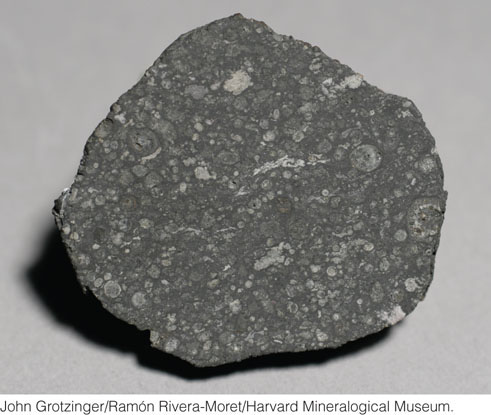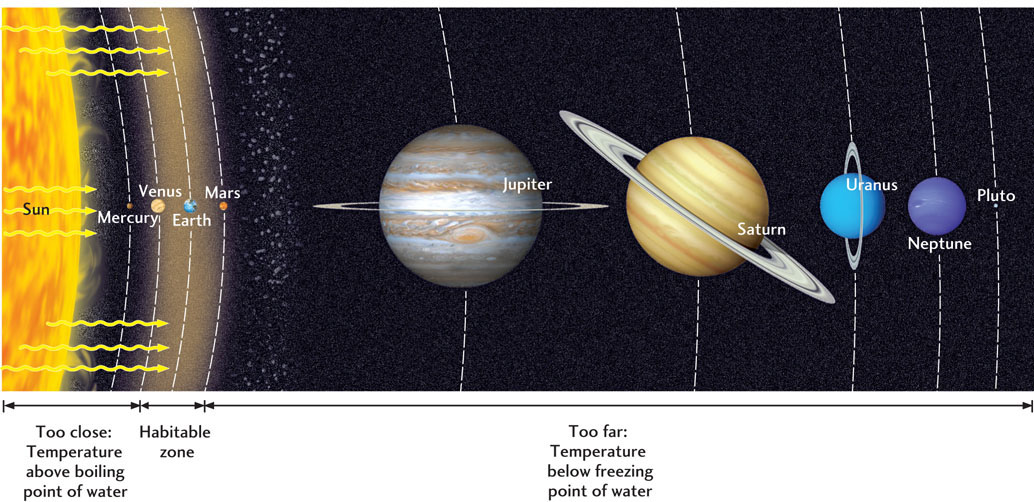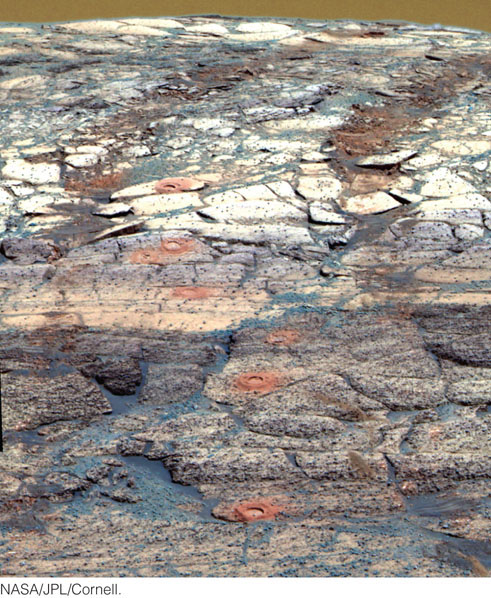Astrobiology: The Search for Extraterrestrial Life
Looking up at the stars on a clear night, it’s hard not to wonder whether we are alone in the universe. As we have learned, the activities of life on our planet create distinctive biogeochemical signatures. Some of these signatures of life could be detected remotely, such as the presence of oxygen in the atmosphere of a planet in another solar system. In other cases, we might be able to land a spacecraft equipped with instruments to detect chemofossils or morphological fossils preserved in rocks.
In the past few decades, astrobiologists have begun to search systematically for evidence of life on other worlds. Although no organisms have yet been discovered beyond Earth, we should be encouraged to pursue this quest. Life may have gotten started somewhere, even if it failed to flourish. In our own solar system, Mars and Europa (a moon of Jupiter) are tantalizing targets because they are similar to Earth in several important ways. In addition, new discoveries of planets orbiting other stars have allowed us to extend this search to other solar systems.
The search for life on other worlds requires a patient, systematic, scientific approach. The most widely accepted approach has been to recognize that life, as we know it here on Earth, is based on liquid water and carbon-bearing organic compounds. Therefore, a sensible strategy might begin with a search for these two principal components of life. Compounds made of carbon are common throughout the universe; astronomers find evidence for them everywhere, from interstellar gases and dust particles to meteorites that land on Earth (Figure 11.23). Therefore, astrobiologists have focused on searching for liquid water. The Mars Exploration Rover mission, described in Chapter 9, was designed to search for evidence of water on the surface of Mars, while the Mars Science Laboratory mission was designed to look for habitable environments. If the two rovers, Spirit and Opportunity, had failed to detect any evidence of water on Mars, any future plans to search for life or habitable environments on Mars (such as the Mars Science Laboratory mission) might well have been abandoned.

307
Of course, there is some risk in this “life as we know it” approach to searching for extraterrestrial life. We might miss forms of life we know nothing about. One could imagine a whole host of other elements and compounds that life could be based on. In general, however, these alternative schemes mainly provide fuel for science fiction writers. At least for the time being, carbon and water are regarded as the key components of all life in the universe.
Habitable Zones Around Stars
At the broadest scale, we assume that life is restricted to surfaces of planets and moons that orbit stars (Figure 11.24). The trick is to identify planets where water could remain stable as a liquid for a long enough time that life could originate. That could take hundreds of millions of years, based on our experience on Earth. If the surface of a planet is too close to its star, water will boil off and become a gas. That is what happened on Venus, which is 30 percent closer to the Sun than Earth and whose surface temperature is 475°C. If the surface of a planet is too far from its star, the water will freeze and become a solid. That is the case on Mars today, which is 50 percent farther from the Sun than Earth and whose surface temperature may fall below −150°C. Earth is in the middle zone, where water is stable as a liquid and surface temperatures are just right for life. For every star, there is a habitable zone, marked by the distances from the star at which water is stable as a liquid. If a planet is within the habitable zone, there a chance that life might have originated there.

308
Greenhouse gases such as carbon dioxide and methane also play an important role in determining the habitable zone. The Martian atmosphere may have had high concentrations of greenhouse gases early in its history. Thus, even though Mars is farther from the Sun than Earth, it might have been warmed through the greenhouse effect, as Earth is today. Indeed, new discoveries suggest that liquid water was once present on the surface of Mars, although we don’t know how long it might have been stable. Thus, it is possible that Mars was habitable at some time in the past. But once the greenhouse gases were lost, Mars was transformed into the icy desert it is today.
Habitable Environments on Mars
People have long wondered about life on Mars. Mars is the planet most closely resembling Earth and is therefore the most likely planet in our solar system to host, or to have hosted, life. As we saw in Chapter 9, the Mars Exploration Rovers and Mars Science Laboratory found clear evidence of liquid water on the Martian surface at some point in the past. Based on their estimates of the ages of surface features, geologists estimate that water on Mars was stable 3 billion years ago, when it carved deep canyons across the planet’s surface, dissolved rocks and minerals, and then precipitated them in a variety of basins where the water evaporated.
Water is present on Mars today, but only as ice. Any life that evolved early on would have had to seek refuge deep beneath the surface from the frigid modern climate. Any organisms that had remained on the surface would now be thoroughly frozen. However, the interior of Mars, like that of Earth, is warmed by radioactive decay, so at some depth within Mars, the ice that is present at or just below its surface must turn into liquid water. It is therefore possible that organisms—perhaps microbial extremophiles—live within a watery zone located a few hundred meters to a few kilometers below the surface of Mars.
Unfortunately, the lack of liquid water is not the only challenge that modern or ancient life would have to face on Mars. As we saw in Chapter 9, the sedimentary rocks discovered by the Mars Exploration Rover Opportunity are full of jarosite, an unusual iron sulfate mineral that precipitates from highly acidic water (Figure 11.25). On Earth, jarosite accumulates in some of the most acidic waters ever observed in natural environments.

Thus, it seems that life on Mars would have to cope not only with limited water, but possibly with very acidic water. The encouraging news is that extremophiles on Earth can live under such conditions (see Earth Issues 11.1). But the more important question is whether life can originate in such environments. Experiments on the origin of life suggest that it might be difficult. Some of the simple reactions that Miller observed in the 1950s would not be possible in an ocean of highly acidic water.
Not all environments on Mars may be highly acidic, however. The Curiosity rover has recently discovered a habitable lake environment represented by rocks formed over 3 billion years ago whose chemistry indicates the presence of more neutral to alkaline conditions. Furthermore, this ancient environment was not very salty, in strong contrast to the extremely salty environment discovered by Opportunity—the same environment that was also very acidic. The findings of the Curiosity mission are encouraging, as they suggest that Mars has environments that might be favorable for life as well as environments that might challenge life. The stunning discoveries made by Opportunity, Spirit, Phoenix, and Curiosity confirm that Mars may well have been habitable at some time. But only continued exploration will show whether life ever originated there.